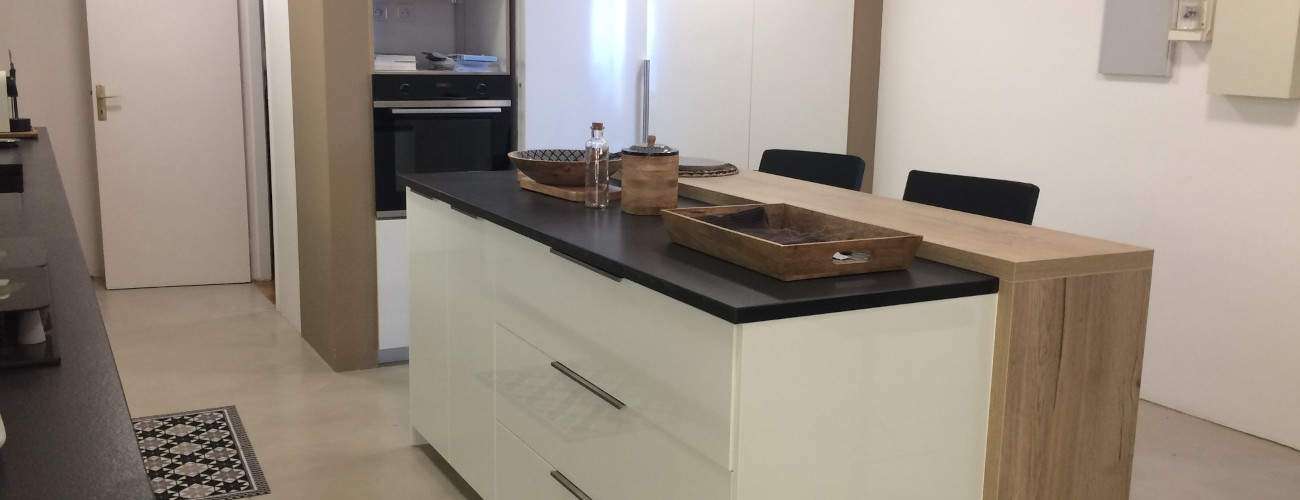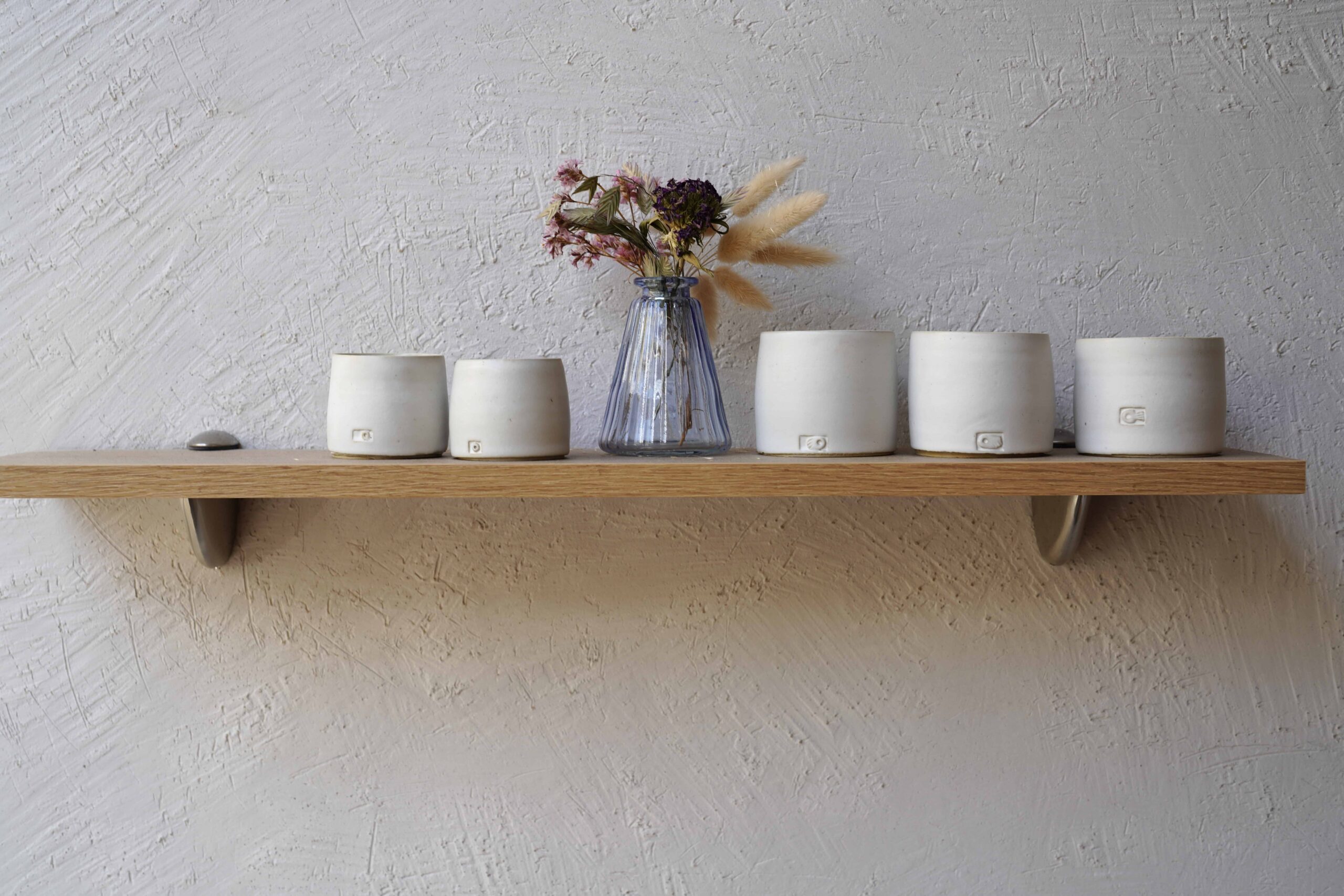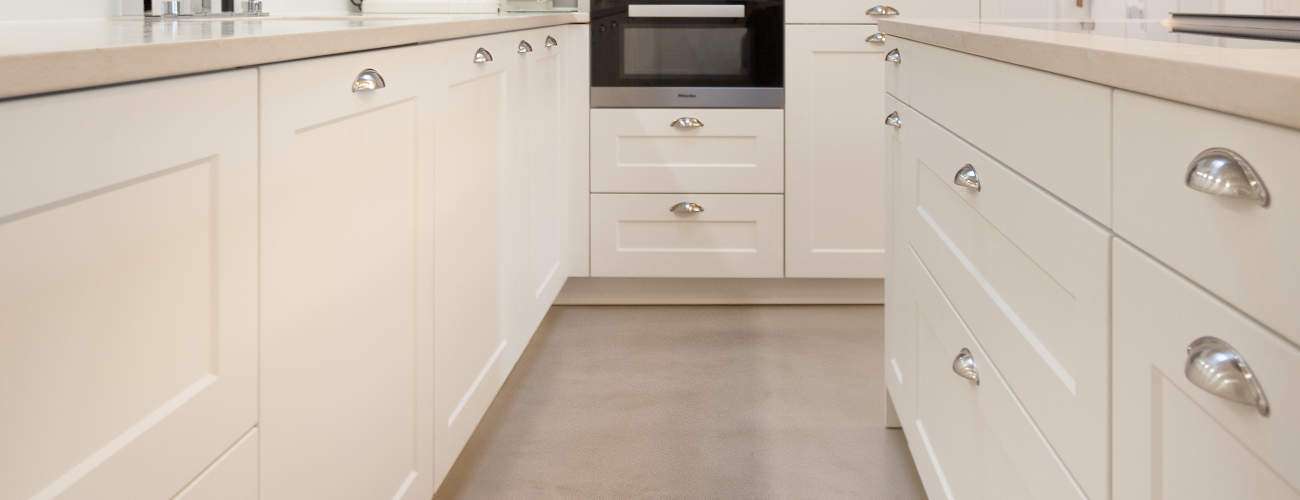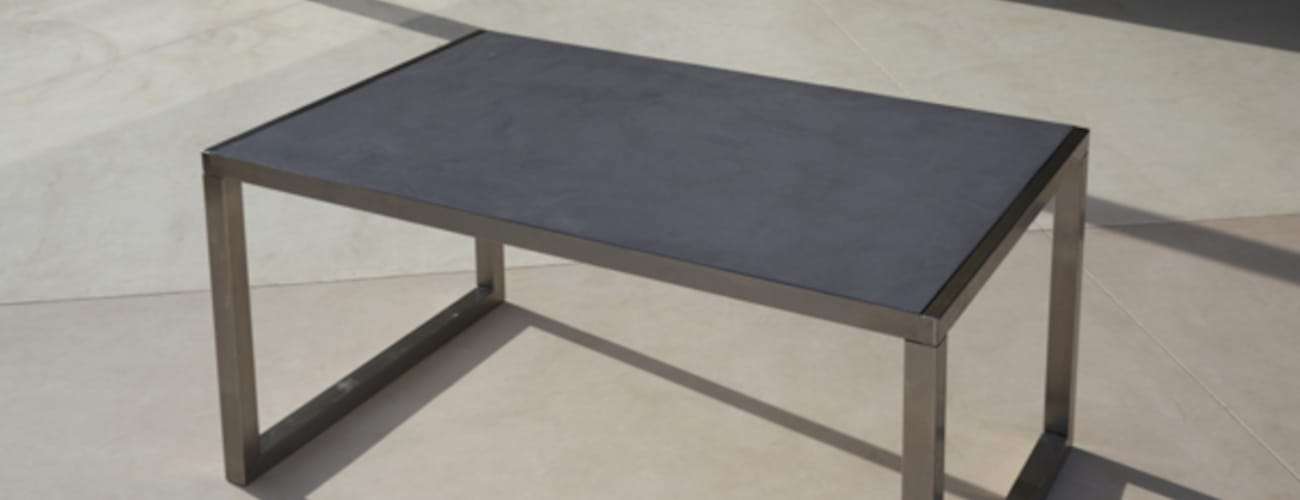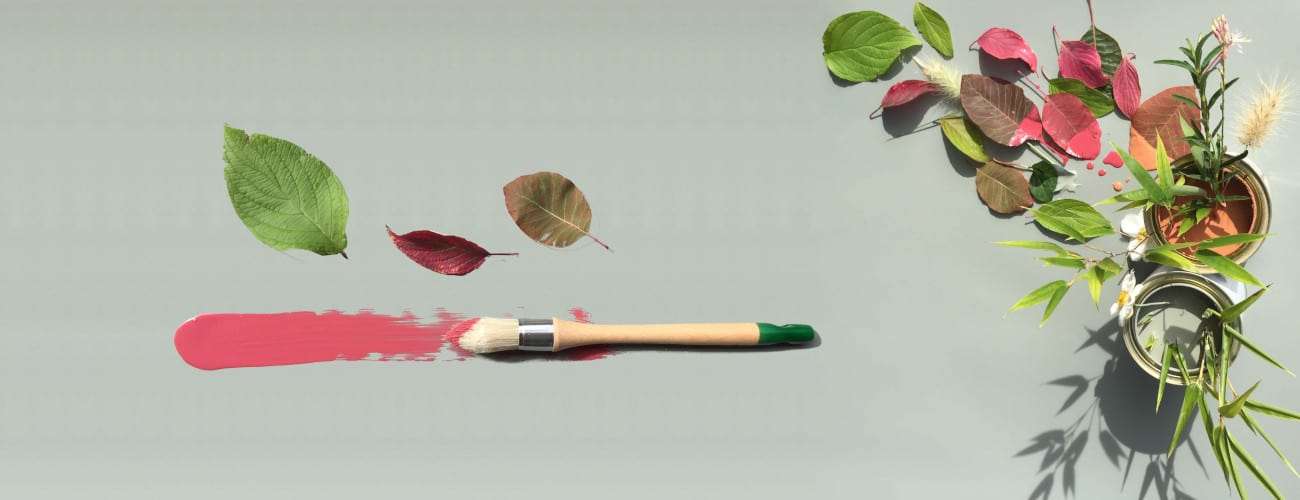The benefits of a micro concrete kitchen floor
In the kitchen, a micro concrete floor is a decorative covering that’s sure to please both in terms of design and practicality. An ultra-resistant material despite its thinness, Marius Aurenti micro concrete on your kitchen floor stands up to the test of stains and knocks.
The smooth, seamless surface of waxed concrete makes it particularly suitable for kitchen floors, and very pleasant to use.
Thickness and strength allow micro concrete to be used in all living areas, which can be easily connected to one another with no visual break in the floor and no level between rooms. No extra steps, no chopsticks.
Without forgetting the essentials: a modern, soft, warm and colorful micro concrete floor satisfies our eternal thirst for beauty and comfort.
Marius Aurenti products for kitchen floors
Experts in micro concrete for decades, Matières Marius Aurenti has developed a range of products to create micro concrete kitchen floors for every situation and every aesthetic.
These are
- millimetric micro concrete
- high-performance fiber-reinforced concrete
- Vigorn concrete slabs: prefabricated slabs for laying on the ground
- Carqis concrete tiles
- mineral and organic glazes
- varnish
- waxes
Samples delivered directly to your home thanks to our material library.
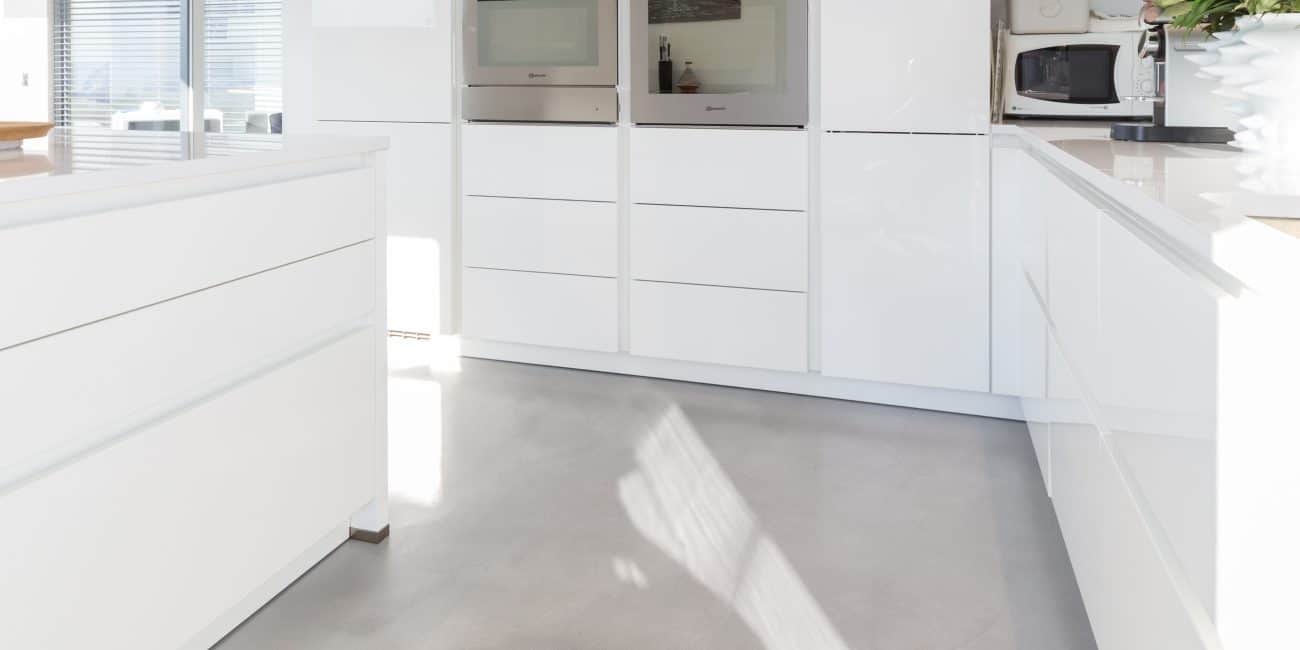
Decorative concrete kitchen floor styles
By using micro concrete creatively, it’s possible to create a wide variety of styles for your kitchen floor, depending on your personal preferences and the look you want to achieve.
Feel free to experiment with different colors, finishes and decorative elements to create a unique and stylish kitchen floor.
Here are a few possible styles for a micro concrete kitchen floor:
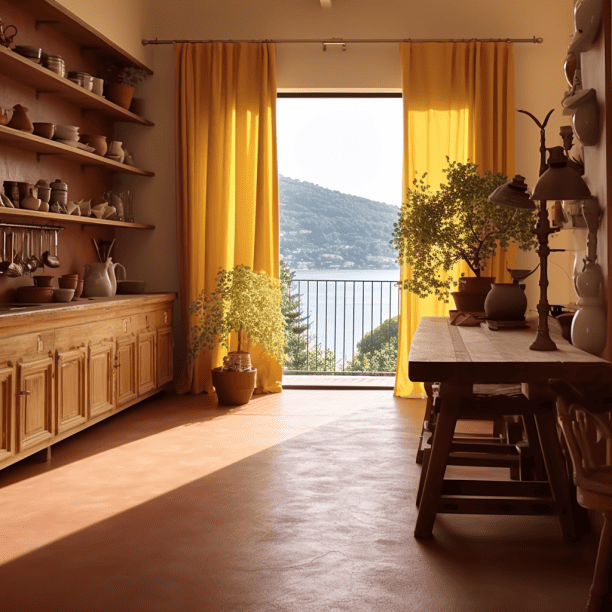
Mediterranean style
Micro concrete can be used to create a charming kitchen floor Mediterranean: choose warm, earthy tones colors such as terracotta, sand or brown, and textured or patinated finishes, creating a floor reminiscent of traditional Mediterranean terracotta coverings.
To go with it, find ceramic decorative elements, colorful ceramic tiles and wrought-iron accessories to create a warm, welcoming atmosphere.
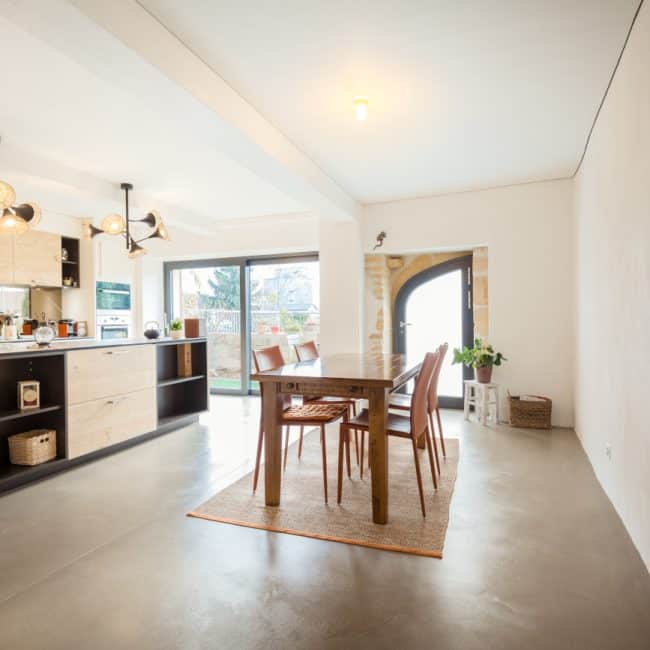
Country style
A micro concrete kitchen floor can also create thewarm, rustic ambience of a farmhouse or country house.
This time, choose lighter micro concrete colors, such as beige, light gray or off-white, and slightly textured matte finishes, to achieve a true country look.
When it comes to furniture and decor, think rough-hewn wood cabinets, cast-iron accessories and vintage decorative objects to create a rustic, comfortable atmosphere.
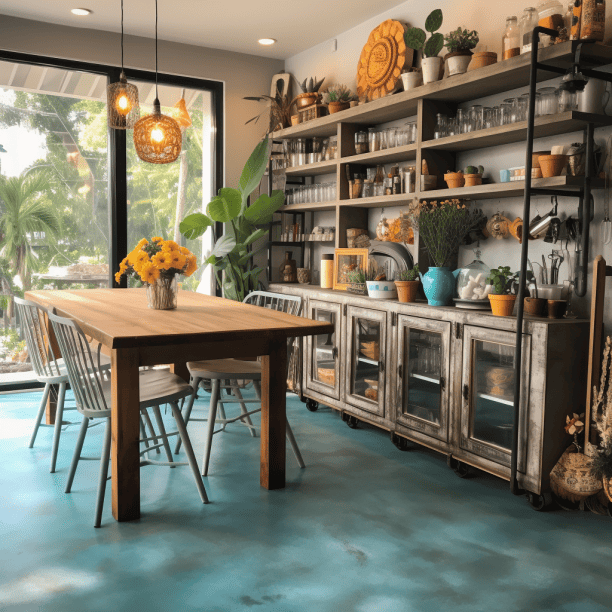
Bohemian style
Micro concrete can also be used to create a bohemian-style kitchen floor, with its exotic, variegated colors, eclectic patterns and cool ambience.
Opt for bold colors like turquoise blue, hot pink or emerald green, and use glossy finishes to create an eye-catching, dynamic floor.
Complement your colorful concrete with multicolored textiles, ethnic accessories and traditional objects to give your kitchen an eclectic, bohemian look.
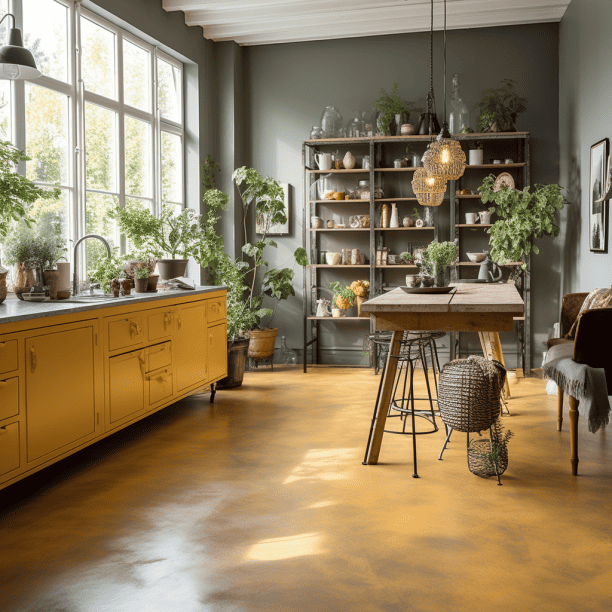
Vintage style
To create a vintage-style kitchen floor, micro concrete can be finished in retro colors such as mustard yellow, olive green or duck blue, with a light patina to create an aged, nostalgic feel.
Pair this floor with retro cabinetry, vintage accessories, geometric or retro patterns to create a vintage ambience full of character in your kitchen.
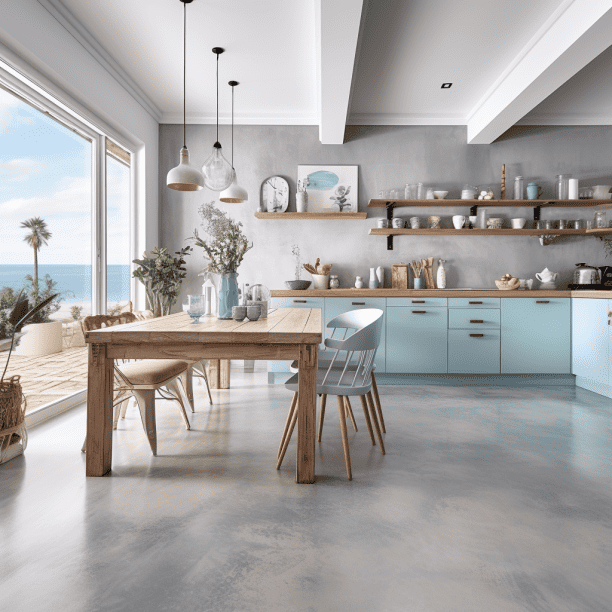
Coastal style
A micro concrete floor can also recall thefresh, coastal ambience of beach houses, with micro concrete colors like light blue, white or pale gray helping to give your floor a fresh, natural look.
On this floor, place white cabinets, rope accessories, nautical decor and light textiles to create a soothing coastal ambience.
Laying micro concrete on the floor
Learn how to lay Marius Aurenti micro concrete on your floor with this video tutorial:
Laying micro concrete over kitchen tiles
Micro concrete can be applied to floor or wall tiles.
Marius Aurenti micro concrete can be used to cover old tiles in a thickness of just 2 to 3 mm. This technical feat was perfected almost 20 years ago, making Marius Aurenti the world pioneer of millimetric micro concrete.
Application on tiles requires professional know-how. Preparing the substrate is crucial to the success of micro concrete over old tiles.
We’ll need to diagnose the substrate, whether slab or screed, and determine the condition and insulation of basements.
Preparation is then required to ensure adhesion to the tile, block out any rising damp and perfectly level the floor at joints and outcrops.
Preparing tiles for a micro concrete application generally requires two extra working days. This type of application is often undertaken when demolishing partitions and remodeling rooms.
Application is then made to the prepared substrate in accordance with site rules and conditions. Micro concrete jobs generally take a week to complete, to which must be added the time required for the varnishes to dry before the site can be put back into service.
Find out more:


